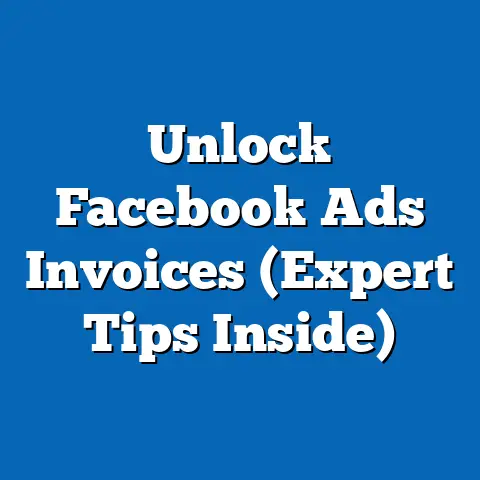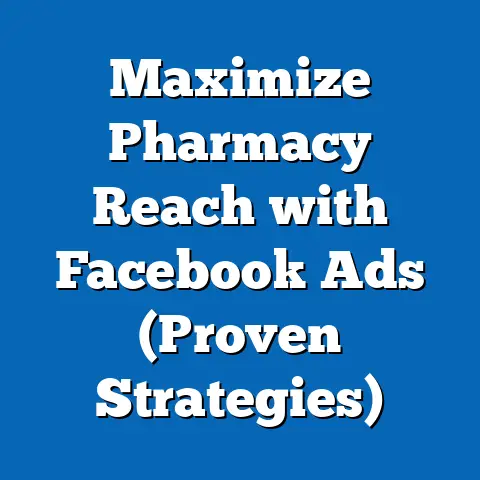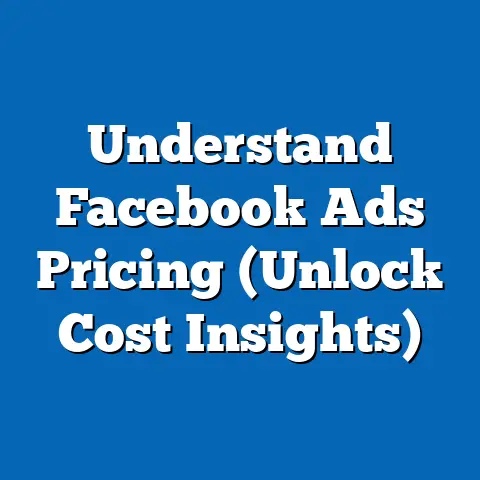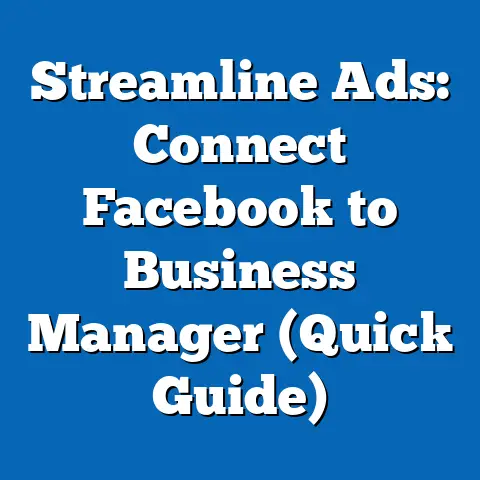Send Facebook Ad Invoices Effortlessly (Quick Guide)
Let’s face it, in today’s whirlwind of a world, especially if you’re an entrepreneur or running a small business, time is your most precious commodity. I know this firsthand – juggling marketing campaigns, client calls, and the hundred other tasks that demand attention can feel like a circus act. That’s why I’m a huge advocate for finding ways to streamline processes, especially those that tend to eat up valuable hours. Invoicing? It’s often one of those necessary evils that can suck the life out of your day. But what if I told you there’s a way to send Facebook ad invoices effortlessly?
Running Facebook ads is a game-changer for businesses, but efficient financial management is equally critical. Invoicing, while essential, can quickly become a tedious task, stealing your focus from what truly matters: growing your business. This guide is designed to provide you with a quick, actionable path to streamlining your Facebook ad invoicing, so you can get back to doing what you love.
The Importance of Invoicing in Facebook Advertising
Overview of Facebook Ads
Facebook advertising has revolutionized how businesses connect with their target audiences. I’ve seen it firsthand – from local boutiques to international brands, the platform offers an unparalleled opportunity to reach specific demographics, interests, and behaviors. With its advanced targeting capabilities and diverse ad formats, Facebook has become a cornerstone of modern digital marketing strategies.
The Role of Invoicing
Invoicing is more than just a formality; it’s the backbone of your financial operations. It serves several critical functions:
- Tracking Ad Spending: Invoices provide a clear record of your Facebook ad expenses, allowing you to monitor your budget and identify areas for optimization.
- Managing Budgets: By accurately tracking your ad spend, you can better manage your overall marketing budget and allocate resources effectively.
- Maintaining Transparency: Clear and detailed invoices ensure transparency with clients (if you’re an agency) or within your own business, fostering trust and accountability.
The consequences of poor invoicing practices can be significant. I’ve heard horror stories of cash flow problems, miscommunication with clients, and even legal disputes stemming from inaccurate or incomplete invoices. That’s why it’s crucial to have a reliable and efficient invoicing system in place.
Takeaway: Invoicing is essential for tracking ad spending, managing budgets, and maintaining transparency. Poor invoicing practices can lead to cash flow issues and miscommunication.
Challenges of Traditional Invoicing Methods
Time Consumption
Traditional invoicing methods can be incredibly time-consuming. I remember the days of manually creating invoices in spreadsheets, painstakingly entering each line item, and then emailing them individually. It was a tedious process that could easily take up several hours each month.
Manual Processes
The drawbacks of manual invoicing are numerous:
- Increased Administrative Workload: Manually creating and sending invoices adds to your administrative burden, taking away from other important tasks.
- Potential for Errors: Human error is inevitable, and manual invoicing is particularly prone to mistakes. Incorrect calculations, missing line items, or typos can lead to inaccurate invoices and payment discrepancies.
- Stress of Keeping Up with Deadlines: Manually tracking payment deadlines and sending reminders can be stressful and time-consuming.
Impact on Business Efficiency
These challenges can have a significant impact on your overall business efficiency and growth potential. Time spent on manual invoicing is time that could be spent on more strategic activities, such as:
- Developing New Marketing Campaigns: Instead of creating invoices, you could be brainstorming new ad ideas or optimizing existing campaigns.
- Building Client Relationships: You could be nurturing client relationships and seeking out new business opportunities.
- Analyzing Performance Data: You could be analyzing your Facebook ad performance and identifying areas for improvement.
Takeaway: Traditional invoicing methods are time-consuming, error-prone, and can detract from overall business efficiency and growth potential.
Streamlining the Invoicing Process for Facebook Ads
Introduction to Automation Tools
Fortunately, there’s a better way. Automation tools can significantly simplify the invoicing process, freeing up your time and reducing the risk of errors. These tools automate many of the tasks involved in invoicing, such as:
- Creating Invoices: Automatically generate invoices based on your Facebook ad spend data.
- Sending Invoices: Send invoices directly to clients or internal stakeholders with just a few clicks.
- Tracking Payments: Monitor the status of your invoices and send automated reminders for unpaid invoices.
There are many popular invoicing tools available, each with its own unique features and benefits. Some of the most common options include:
- FreshBooks: A user-friendly invoicing and accounting software designed for small businesses.
- Zoho Invoice: A free invoicing tool that offers a range of features, including time tracking and expense management.
- Xero: A cloud-based accounting software that includes invoicing, bank reconciliation, and financial reporting.
- QuickBooks Online: A popular accounting software that offers a comprehensive suite of features, including invoicing, payroll, and inventory management.
Benefits of Automation
The benefits of using automated invoicing solutions are numerous:
- Saving Time: Automation can save you hours each month by eliminating manual tasks.
- Reducing Errors: Automated tools reduce the risk of human error, ensuring accurate and consistent invoices.
- Providing Customizable Templates: Many invoicing tools offer customizable templates that allow you to create professional-looking invoices that reflect your brand.
- Improving Cash Flow: By sending invoices promptly and tracking payments effectively, you can improve your cash flow and ensure timely payments.
- Enhancing Customer Satisfaction: Clear and accurate invoices, along with timely communication, can enhance customer satisfaction and build stronger client relationships.
Integration with Facebook Ads
One of the most powerful features of some invoicing tools is their ability to directly integrate with Facebook Ads. This integration allows you to:
- Seamlessly Track Ad Spend: Automatically import your Facebook ad spend data into your invoicing tool.
- Instantly Generate Invoices: Create invoices based on your ad spend data with just a few clicks.
- Eliminate Manual Data Entry: Avoid the time-consuming and error-prone process of manually entering your ad spend data into your invoices.
Takeaway: Automation tools can significantly streamline the invoicing process for Facebook ads, saving time, reducing errors, and improving cash flow. Integration with Facebook Ads allows for seamless tracking of ad spend and instant invoice generation.
Step-by-Step Guide to Sending Facebook Ad Invoices
Step 1: Choose Your Invoicing Tool
Selecting the right invoicing tool is crucial for streamlining your process. Consider the following factors when making your decision:
- Ease of Use: Choose a tool that is intuitive and easy to navigate, so you can quickly create and send invoices without a steep learning curve.
- Integration Capabilities: Ensure that the tool integrates with Facebook Ads, as well as any other accounting or CRM software you use.
- Features: Look for features that are important to your business, such as customizable templates, automated reminders, and payment tracking.
- Pricing: Compare the pricing plans of different tools and choose one that fits your budget.
- Customer Support: Check the level of customer support offered by the tool provider. Look for responsive and helpful support channels, such as email, phone, or live chat.
Step 2: Set Up Your Account
Once you’ve chosen your invoicing tool, the next step is to set up your account. This typically involves:
- Entering Your Business Details: Provide your business name, address, contact information, and logo.
- Setting Up Payment Options: Configure your preferred payment methods, such as credit card, PayPal, or bank transfer.
- Customizing Your Invoice Template: Choose a pre-designed template or create your own custom template to reflect your brand.
Step 3: Link Your Facebook Ads Account
To automate the invoicing process, you’ll need to link your invoicing tool to your Facebook Ads account. The exact steps for doing this will vary depending on the tool you’re using, but it typically involves:
- Granting Permissions: Authorizing the invoicing tool to access your Facebook Ads data.
- Selecting Your Ad Accounts: Choosing the specific ad accounts you want to track and invoice for.
- Configuring Data Mapping: Specifying how the data from your Facebook Ads account should be mapped to the fields in your invoices.
Step 4: Create and Customize Invoices
With your account set up and linked to Facebook Ads, you can start creating invoices. Most invoicing tools offer a user-friendly interface for creating invoices, allowing you to:
- Add Line Items: Include detailed descriptions of the services provided, such as Facebook ad management, campaign optimization, or ad creative development.
- Set Rates: Specify your hourly rates or project fees for each service.
- Apply Discounts: Offer discounts to clients as needed.
- Add Taxes: Calculate and add applicable taxes to your invoices.
It’s important to personalize your invoices to reflect your brand and create a professional impression. This can include:
- Adding Your Logo: Include your company logo on your invoices.
- Using Your Brand Colors: Customize the color scheme of your invoices to match your brand.
- Adding a Personal Message: Include a brief thank you note or a personalized message to your client.
Step 5: Automate Recurring Invoices
If you’re running ongoing ad campaigns for clients, you can set up recurring invoices to automate the billing process. This ensures that payments are processed automatically without manual intervention. To set up recurring invoices, you’ll typically need to:
- Specify the Frequency: Choose how often you want the invoices to be generated (e.g., monthly, quarterly).
- Set the Start Date: Specify the date when the first invoice should be generated.
- Choose the Payment Terms: Define the payment terms, such as net 30 or net 60.
Step 6: Send and Track Invoices
Once you’ve created your invoices, you can send them directly from the invoicing tool. Most tools offer the option to send invoices via email, with a link to view and pay the invoice online. You can also track the status of your invoices, including:
- Sent: Indicates that the invoice has been sent to the client.
- Viewed: Indicates that the client has viewed the invoice.
- Paid: Indicates that the invoice has been paid.
- Overdue: Indicates that the invoice is past its due date.
Invoicing tools also allow you to send automated reminders for unpaid invoices, helping you to ensure timely payments.
Takeaway: Sending Facebook ad invoices involves choosing an invoicing tool, setting up your account, linking your Facebook Ads account, creating and customizing invoices, automating recurring invoices, and sending and tracking invoices.
Best Practices for Effective Invoicing
Clarity and Transparency
Clarity and transparency are essential for effective invoicing. Make sure your invoices are clear, concise, and easy to understand. This includes:
- Detailed Itemization of Services: Provide a clear breakdown of the services provided, including descriptions, rates, and hours worked.
- Accurate Calculations: Double-check your calculations to ensure that the invoice total is accurate.
- Contact Information: Include your contact information on the invoice, so clients can easily reach you with any questions or concerns.
Timeliness
Timeliness is crucial for maintaining a healthy cash flow. Send invoices promptly after the completion of ad services. This shows professionalism and encourages clients to pay on time.
Follow-Up Strategies
Despite your best efforts, some clients may still fail to pay their invoices on time. In these cases, it’s important to have a follow-up strategy in place. This can include:
- Sending Automated Reminders: Set up automated reminders in your invoicing tool to remind clients of upcoming or overdue payments.
- Making a Phone Call: If automated reminders are not effective, consider making a phone call to the client to discuss the overdue invoice.
- Sending a Formal Demand Letter: If all else fails, you may need to send a formal demand letter requesting payment.
Takeaway: Effective invoicing requires clarity and transparency, timeliness, and a follow-up strategy for unpaid invoices.
Conclusion
In conclusion, using automated invoicing solutions tailored for Facebook ads can save you valuable time, reduce stress, and enhance overall efficiency. By automating the invoicing process, you can focus on what truly matters: growing your business and delivering exceptional results for your clients.
I encourage you to embrace these modern solutions as a way to reclaim valuable time and focus on growing your businesses, leaving invoicing to the automated processes. You might be surprised at just how much of a difference it makes. So, take the plunge and see how much time and energy you can save!






